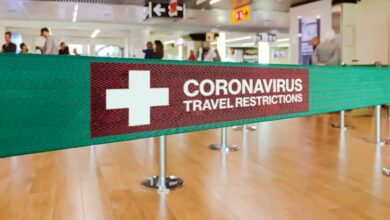U.S. officials are growing increasingly worried that an attack on Ukraine by Russia is imminent. However, others are expressing optimism that there is still a path to diplomacy as global leaders work to avert the simmering crisis.
Secretary of State Antony Blinken announced that the U.S. is closing its Kyiv embassy as tensions in the region continue to escalate to start the week. The essential diplomatic personnel are to be relocated to the western city of Lviv, farther away from the border with Russia. This decision comes a few days after the Department of Defense ordered most government employees to leave Ukraine.
A State Department official also said that U.S. diplomats took the additional step of destroying classified information over the last few days as plans to close the embassy came into place. Ukrainian National Guard Police will stand guard over the embassy in the coming days.
Still Hope for Diplomacy
The U.S. is still asserting that they remain committed to finding common ground leading to a favorable diplomatic outcome. U.S. President Joe Biden spoke via phone call with both Russian President Vladimir Putin and Ukraine President Volodymyr Zelensky over the weekend. However, despite the lengthy phone conversations, there were no significant decisions made.
In addition to the U.S. involvement, German Chancellor Olaf Scholz met with Zelensky in Kyiv on Monday and Tuesday to continue the goals of de-escalation. A spokesperson for the Kremlin said that Putin is willing to negotiate, adding a bit of optimism to global leaders hoping for a peaceful end to the conflict.
On Tuesday morning, Blinken also spoke over the phone with his counterpart in Russian Foreign Minister Sergey Lavrov. The two also spoke over the weekend, indicating that they would stay in touch regarding the issue.
Monday’s Dow Plummets as Worries Intensify Before Tuesday Rebound
The Dow dropped 172 points on Monday as Wall Street reacted to the potential financial implications of the escalating conflict. The stocks began to plummet after the U.S. officially announced that it was closing the embassy in Kyiv. Wall Street does not react well to uncertainty, fueling the concerns for investors about what will happen next.
However, the markets saw a surge on Tuesday after Russia announced that it would withdraw some of its troops near Ukraine. The Dow shot up nearly 300 points right after the announcement.
Financial experts are rightfully concerned that a continued conflict in Eastern Europe will cause a ripple effect on the global economy. More specifically, investors are worried that a war would kill the supply of Russia’s natural gas and oil exports to other countries in the region. This situation could send prices skyrocketing during an already difficult economic period for the world as a whole.
Russia Expands Military Build-Up
Another chief area of concern is that Putin continues to add more troops to the region surrounding the border of Ukraine. According to Pentagon spokesman John Kirby, Putin is adding to his “menu of options” by bringing in more troops on land, sea, and air. In addition to the land build-up, Putin is adding to the maritime forces with multiple ships now stationed in the Black Sea.
This growing number of troops signals that Russia is getting prepared to stay in the region for an extended period of time, a necessity if war is around the corner.
Putin Says He Does Not Want War
Despite the obvious military build-up of Russian troops, Putin said he did not want war. The comments came during a Tuesday press conference with Scholz. Putin went on to say that this is why his team is still offering proposals during the negotiating process.
This statement comes as Russia also announced that some of its troops would come back to their respective bases after completing a series of drills. However, the government stressed that these exercises would continue.
According to the Russian defense ministry, the troops returning are from the Southern and Western military districts. These are the two districts closest to Ukraine. The announcement did not indicate how many of the troops would return to their stations nor did it indicate where the troops had a permanent home.
Recent numbers put the number of Russian troops near the border with Ukraine at over 130,000.






